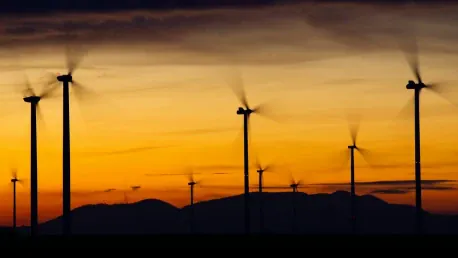The approval of the construction and operation plan (COP) for the 2-GW Maryland Offshore Wind Project by the U.S. Department of the Interior marks a pivotal moment for clean energy. This final federal permit allows developer US Wind to start construction, representing a significant milestone for the offshore wind industry in the United States. The project involves establishing over a hundred wind turbines off the coasts of Maryland and Delaware, helping to fortify the U.S. offshore wind supply chain.
A key element of the Maryland Offshore Wind Project is its economic impact, expected to create numerous American jobs and revitalize industrial facilities. An essential aspect of this rejuvenation is bringing steel fabrication back to the historic Bethlehem Steel facility in Dundalk. This project not only supports the renewable energy sector but also invigorates various industries throughout its lifespan. The overall economic benefits extend beyond job creation, bolstering local economies and industrial growth.
Environmental management and regulation play a crucial role in the success of offshore wind projects. The Bureau of Ocean Energy Management (BOEM) issued a Record of Decision, finalizing environmental measures for future wind projects in New York and New Jersey, aiming to mitigate potential environmental impacts. These measures are based on strategies implemented in previously awarded permits, ensuring that new projects maintain high environmental standards. This approach demonstrates a commitment to minimizing the ecological footprint of renewable energy initiatives.
The Maryland Offshore Wind Project’s approval underscores a trend towards a stronger and more localized offshore wind supply chain in the United States. Over the past four years, US Wind has diligently secured necessary permits, including a recent Letter of Authorization from the National Marine Fisheries Service. The company’s lease of an 80,000-acre area off Maryland’s coast in 2014 positions it well to commence offshore construction by 2028. This proactive approach to securing permits helps streamline the project’s advancement while ensuring compliance with regulatory requirements.
The comprehensive plan for the project involves constructing up to 114 wind turbines, four offshore substations, a meteorological tower, and subsea transmission cables extending to Sussex County, Delaware. Strategically situated 10 nautical miles from Ocean City, Maryland, the project is designed to optimize energy efficiency and supply. US Wind is in continuous collaboration with the U.S. Army Corps of Engineers, Maryland Department of the Environment, and Delaware Department of Natural Resources and Environmental Control to secure additional necessary permits for nearshore activities.
The Maryland Public Service Commission (PSC) has also been actively involved, with staff recommending the approval of US Wind’s application to rebid for 1,710 MW of offshore wind. A phased delivery plan proposes 405 MW by late 2028 and the remaining by 2030, providing Maryland with nearly 7 million MWh of renewable energy annually. This phased approach ensures a steady influx of renewable energy into the state’s power grid, enhancing energy reliability and sustainability.
Anne Reynolds, vice president for offshore wind at American Clean Power, highlights the project’s role in meeting growing electricity demand, driving economic growth, job creation, and enhancing American energy security. This project’s contribution to establishing new domestic manufacturing facilities, particularly at Sparrows Point, a site historically associated with Bethlehem Steel, signifies the transition from an industrial heritage to a renewable energy future. This transformation represents a broader shift towards sustainability and innovation in American energy infrastructure.
Moreover, the Environmental Protection Agency (EPA) has initiated an effort to gather public comments on air quality permits for the New England Wind 1 and 2 projects. This includes assessments of all emissions from these projects, such as those from repair vessels, ensuring comprehensive environmental oversight. Public involvement in these processes emphasizes transparency and community engagement in environmental regulation.
Overall, the approval of the Maryland Offshore Wind Project reflects a coordinated effort to expand renewable energy infrastructure in the United States, stimulate economic growth, and ensure environmental sustainability. This project represents a vital step in advancing the nation’s renewable energy capabilities while fostering economic and environmental synergies.









